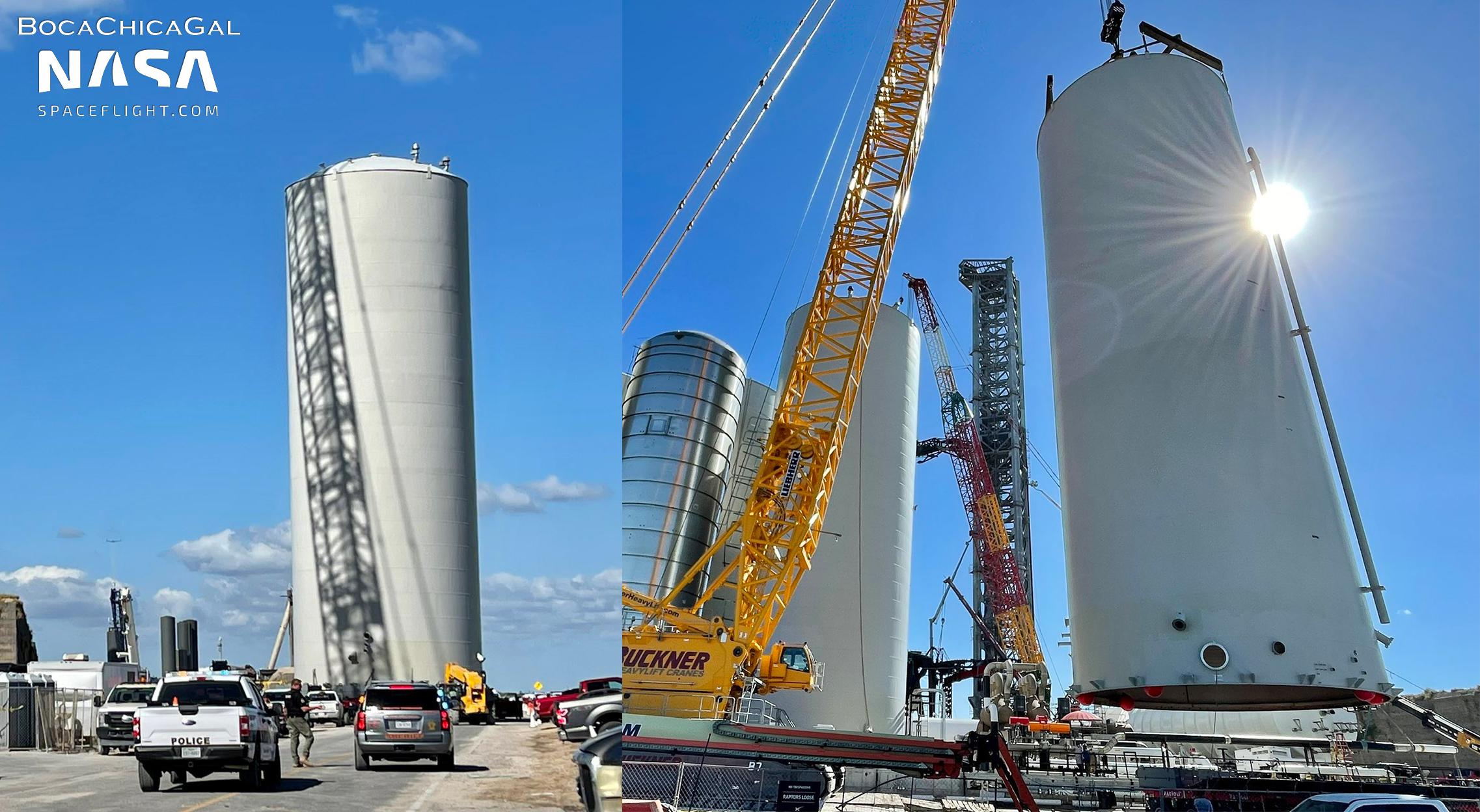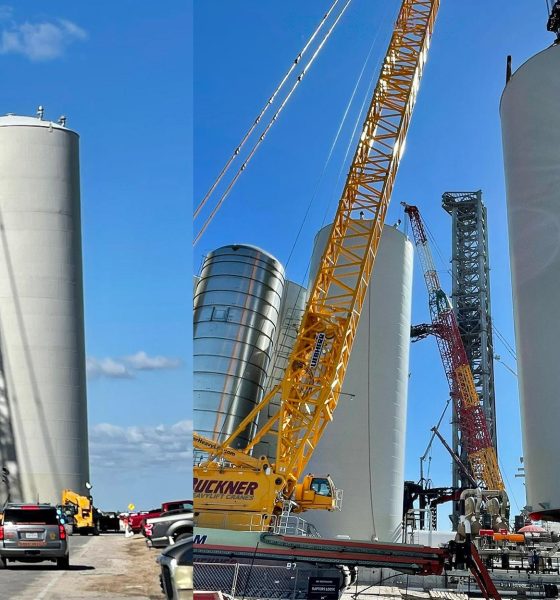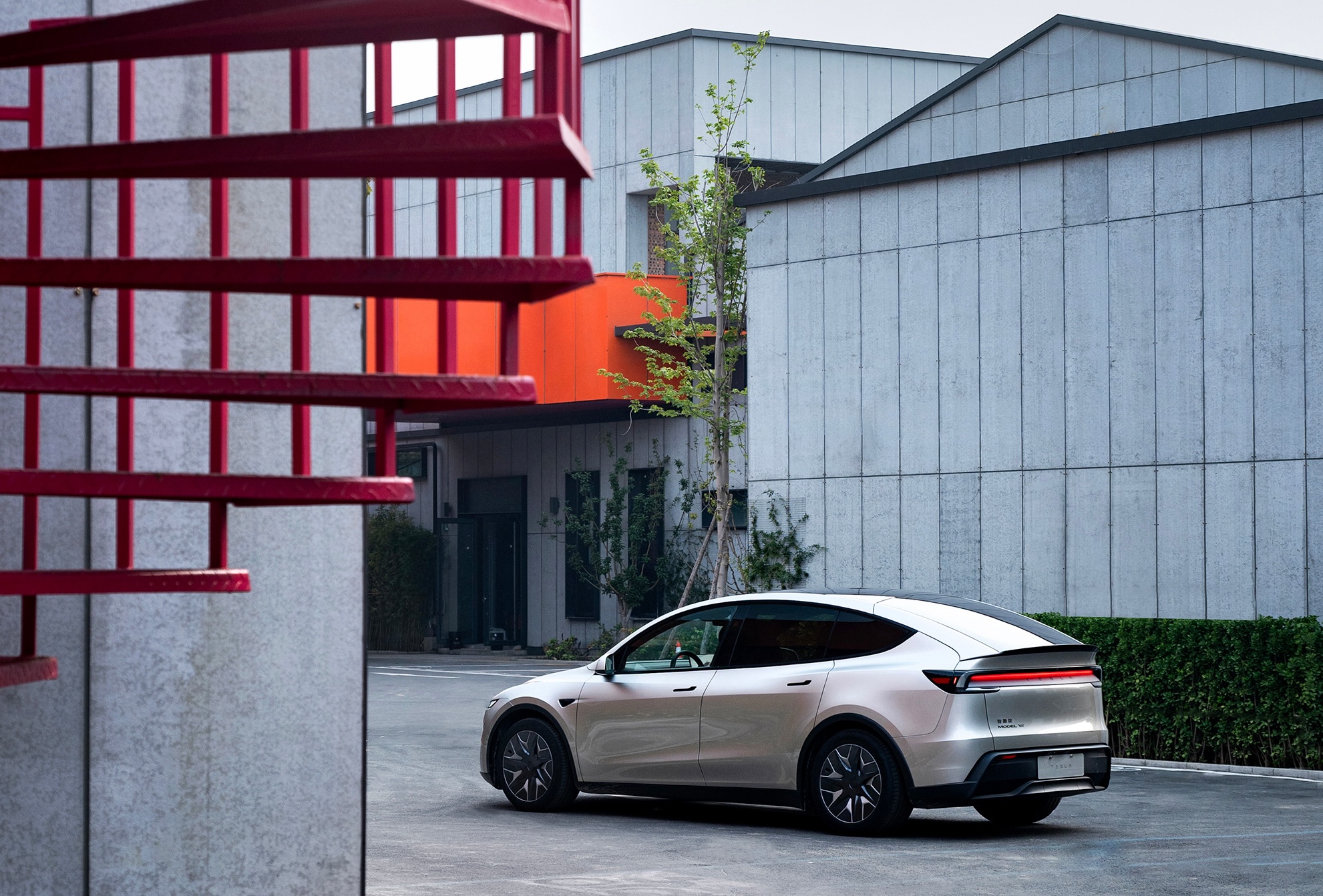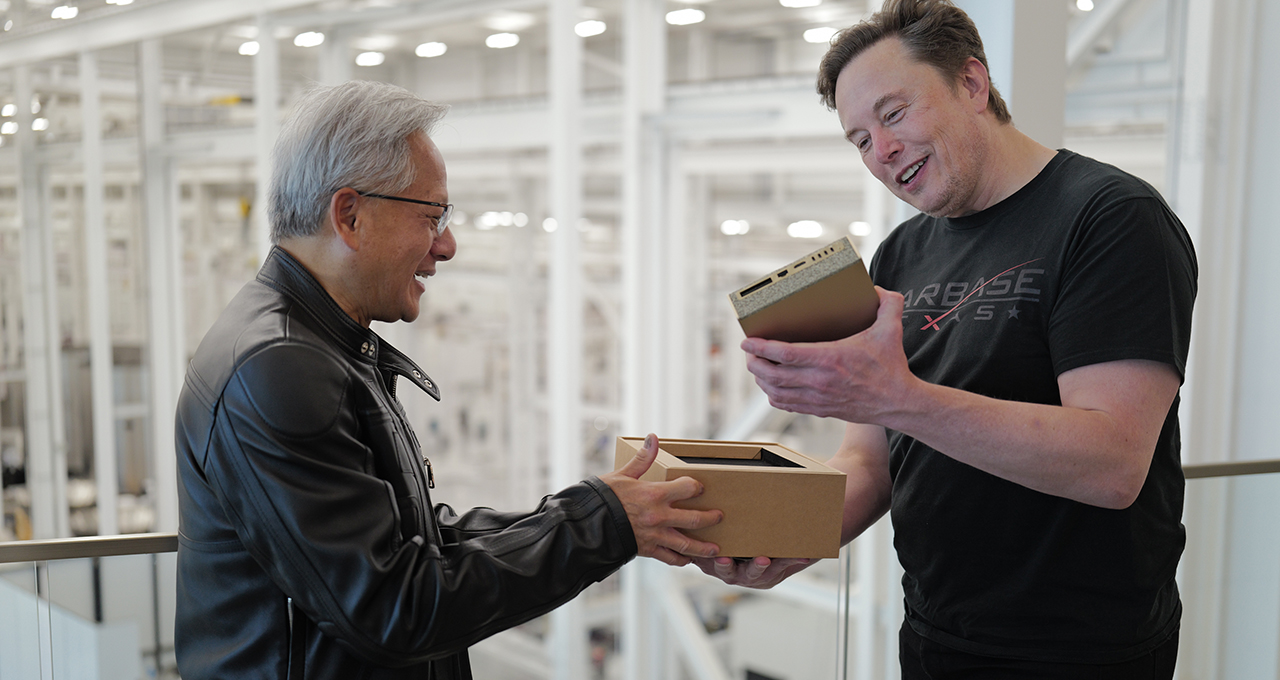

News
SpaceX rolls second-to-last ‘cryoshell’ to Starbase’s orbital tank farm
In the last two days, SpaceX has transported a giant mystery tank and the second-to-last ‘cryoshell’ to Starbase’s orbital tank farm, pushing Starship’s first orbital-class launch site a step closer to completion.
While the horizontal tank moved to the pad on Sunday remains decidedly mysterious, the ‘cryoshell’ is a well-understood component of SpaceX’s custom-built solution to Starship and Super Heavy propellant storage. Unlike virtually all other modern orbital launch sites, including SpaceX’s three Falcon pads and suborbital Starship test site, the company decided to build its first orbital-class Starship tank farm more or less from scratch. Though the number of off-the-shelf tanks continues to increase in recent weeks, the farm’s primary tanks – tasked with storage thousands of tons of liquid oxygen and methane propellant and liquid nitrogen coolant – are essentially stretched and lightly modified Starships.
Built in the same Starbase facilities with the same techniques and out of the same parts as Starship tanks, SpaceX’s custom storage tanks are likely cheaper than alternatives. However, they still amount to thin, uninsulated steel tanks – about as bad a vessel as it gets for the stable storage of cryogenic fluids. To solve the problem of insulation, SpaceX split the difference between pure vertical integration and a pure off-the-shelf solution and contracted with a third party to build massive ‘cryoshells’ – 12m (~40 ft) wide cylinders that ‘sleeve’ SpaceX’s custom 9m (~30 ft) wide storage tanks.
For the first of several anticipated orbital Starship launch pads and tank farms, that contractor built eight shells for SpaceX – seven sleeves and one million-gallon water tank. Over the last six months, SpaceX has installed the water tanks, completed all seven custom-built propellant storage tanks, and ‘sleeved’ five of those tanks. Beginning in September, two or three of the five sleeved tanks have even graduated into cryogenic proof testing.
Just days ago, SpaceX also began delivering liquid oxygen (LOx) to the orbital tank farm for the first time ever, suggesting that the company has begun the slow process of filling one, two, or even all three of the farm’s LOx tanks with a small army of tanker trucks.
On Monday, October 18th, SpaceX rolled the first of the last two remaining cryoshells from their build site to the orbital tank farm. Hours later, SpaceX attached a crane, lifted the sixth cryoshell, and sleeved GSE tank #8 – the second of two methane tanks. With that installation out of the way, there’s now a good chance that Starship’s first orbital tank farm will be structurally complete by the end of the month. With a vast majority of plumbing already in place and the process of filling the spaces between cryoshells and GSE tanks with insulating foam already underway, it’s possible that the farm will be ready to support some level of Super Heavy wet dress rehearsal and static fire testing sometime next month.
In the meantime, there remains the mystery of a pair of massive horizontal liquid methane (LCH4) tanks – the first of which was installed at the orbital tank farm on Sunday, October 17th. Likely capable of holding about as much fuel as each of SpaceX’s two custom-built LCH4 storage tanks, it’s unclear why the company appears to be effectively doubling the orbital pad’s LCH4 storage capacity with the addition of two new tanks purchased off the shelf.

News
Tesla extends FSD Supervised ride-alongs in Europe by three months
Needless to say, it does appear that FSD fever is starting to catch in Europe.

Tesla appears to be doubling down on its European Full Self-Driving (Supervised) push, with the company extending its demo ride-along program by three months until the end of March 2026. The update seems to have been implemented due to overwhelming demand.
Needless to say, it does appear that FSD fever is starting to catch in Europe.
Extended FSD demonstrations
Tesla EU Policy and Business Development Manager Ivan Komušanac shared on LinkedIn that the company is offering ride-along experiences in Germany, France and Italy while working toward FSD (Supervised) approval in Europe.
He noted that this provides a great feedback opportunity from the general public, encouraging participants to record and share their experiences. For those unable to book in December, Komušanac teased more slots as “Christmas presents.”
Tesla watcher Sawyer Merritt highlighted the extension on X, stating that dates now run from December 1, 2025, to March 31, 2026, in multiple cities including Stuttgart-Weinstadt, Frankfurt and Düsseldorf in Germany. This suggests that the FSD ride-along program in Europe has officially been extended until the end of the first quarter of 2026.
Building momentum for European approval
Replies to Merritt’s posts buzzed with excitement, with users like @AuzyMale noting that Cologne and Düsseldorf are already fully booked. This sentiment was echoed by numerous other Tesla enthusiasts on social media. Calls for the program’s expansion to other European territories have also started gaining steam, with some X users suggesting Switzerland and Finland as the next locations for FSD ride-alongs.
Ultimately, the Tesla EU Policy and Business Development Manager’s post aligns with the company’s broader FSD efforts in Europe. As per recent reports, Tesla recently demonstrated FSD’s capabilities for Rome officials. Reporters from media outlets in France and Germany have also published positive reviews of FSD’s capabilities on real-world roads.
News
Tesla’s six-seat extended wheelbase Model Y L sold out for January 2026
Estimated delivery dates for new Tesla Model Y L orders now extend all the way into February 2026.

The Tesla Model Y L seems to be in high demand in China, with estimated delivery dates for new orders now extending all the way into February 2026.
This suggests that the Model Y L has been officially sold out from the rest of 2025 to January 2026.
Model Y L estimated delivery dates
The Model Y L’s updated delivery dates mark an extension from the vehicle’s previous 4-8 week estimated wait time. A detailed chart shared by Tesla data tracker @Tslachan on X shows the progressions of the Model Y L’s estimated delivery dates since its launch earlier this year.
Following its launch in September, the vehicle was given an initial October 2025 estimated delivery date. The wait times for the vehicle were continually updated over the years, until the middle of November, when the Model Y L had an estimated delivery date of 4-8 weeks. This remained until now, when Tesla China simply listed February 2026 as the estimated delivery date for new Model Y L orders.
Model Y demand in China
Tesla Model Y demand in China seems to be very healthy, even beyond the Model Y L. New delivery dates show the company has already sold out its allocation of the all-electric crossover for 2025. The Model Y has been the most popular vehicle in the world in both of the last two years, outpacing incredibly popular vehicles like the Toyota RAV4. In China, the EV market is substantially more saturated, with more competitors than in any other market.
Tesla has been particularly kind to the Chinese market, as it has launched trim levels for the Model Y in the country that are not available anywhere else, such as the Model Y L. Demand has been strong for the Model Y in China, with the vehicle ranking among the country’s top 5 New Energy Vehicles. Interestingly enough, vehicles that beat the Model Y in volume like the BYD Seagull are notably more affordable. Compared to vehicles that are comparably priced, the Model Y remains a strong seller in China.
Elon Musk
NVIDIA CEO Jensen Huang commends Tesla’s Elon Musk for early belief
“And when I announced DGX-1, nobody in the world wanted it. I had no purchase orders, not one. Nobody wanted to buy it. Nobody wanted to be part of it, except for Elon.”

NVIDIA CEO Jensen Huang appeared on the Joe Rogan Experience podcast on Wednesday and commended Tesla CEO Elon Musk for his early belief in what is now the most valuable company in the world.
Huang and Musk are widely regarded as two of the greatest tech entrepreneurs of the modern era, with the two working in conjunction as NVIDIA’s chips are present in Tesla vehicles, particularly utilized for self-driving technology and data collection.
Nvidia CEO Jensen Huang regrets not investing more in Elon Musk’s xAI
Both CEOs defied all odds and created companies from virtually nothing. Musk joined Tesla in the early 2000s before the company had even established any plans to build a vehicle. Jensen created NVIDIA in the booth of a Denny’s restaurant, which has been memorialized with a plaque.
On the JRE episode, Rogan asked about Jensen’s relationship with Elon, to which the NVIDIA CEO said that Musk was there when nobody else was:
“I was lucky because I had known Elon Musk, and I helped him build the first computer for Model 3, the Model S, and when he wanted to start working on an autonomous vehicle. I helped him build the computer that went into the Model S AV system, his full self-driving system. We were basically the FSD computer version 1, and so we were already working together.
And when I announced DGX-1, nobody in the world wanted it. I had no purchase orders, not one. Nobody wanted to buy it. Nobody wanted to be part of it, except for Elon.
He goes ‘You know what, I have a company that could really use this.’ I said, Wow, my first customer. And he goes, it’s an AI company, and it’s a nonprofit and and we could really use one of these supercomputers. I boxed one up, I drove it up to San Francisco, and I delivered it to the Elon in 2016.”
The first DGX-1 AI supercomputer was delivered personally to Musk when he was with OpenAI, which provided crucial early compute power for AI research, accelerating breakthroughs in machine learning that underpin modern tools like ChatGPT.
Tesla’s Nvidia purchases could reach $4 billion this year: Musk
The long-term alliance between NVIDIA and Tesla has driven over $2 trillion in the company’s market value since 2016.








